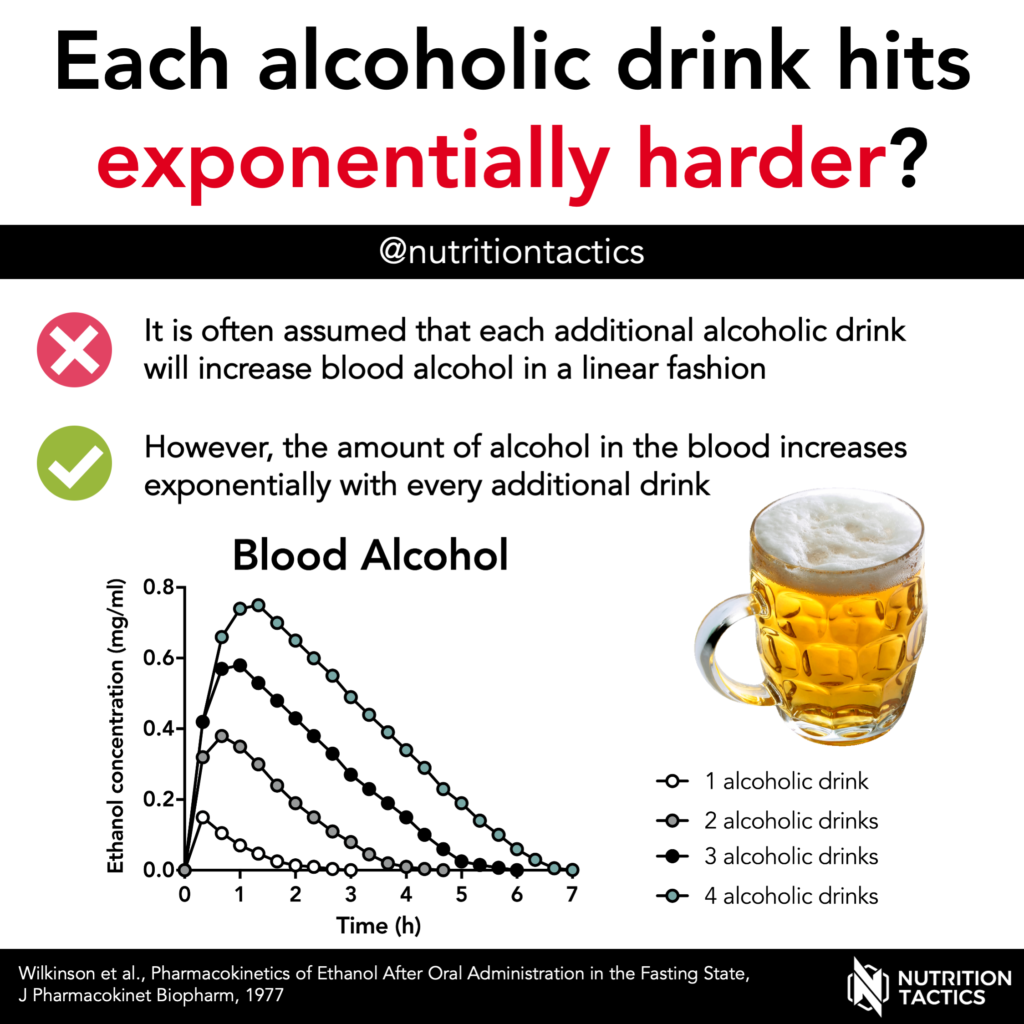How do multiple alcoholic drinks increase blood alcohol concentrations?
Alcohol is one of the most widely used drugs. The more alcohol you drink, the more ends up in your blood. It is often assumed that this happens in a linear fashion.
In this study, the effect of several doses of alcohol on blood alcohol concentrations over time was investigated. Fasted participants ingested 15, 30, 45, or 60 ml of 95% ethanol (the form of alcohol that is in alcoholic beverages) in orange juice on separate visits. These doses correspond roughly to 1, 2, 3, and 4 alcoholic drinks. Repeated capillary blood samples (from the fingertip) were taken until 7 hours after ingestion.
Peak blood alcohol concentrations increased in a linear fashion with each additional dose. However, each additional drink also increased the duration that alcohol was elevated. Together, this resulted in an exponential increase in blood alcohol area under the curve (total blood concentration over time).
A possible explanation is that the liver clears alcohol at a fixed rate. With one drink, the liver immediately starts clearing this drink. But when you take an additional drink, all this alcohol enters and stay in your blood for a long while because your liver is already occupied.
Thus, to get drunk with as little alcohol as possible, you should drink it all at once. To minimize getting drunk, you should space out your drinks as much as possible.
Go to the next uncategorized infographic:
Smoking reduces muscle growth?


Leave a Reply